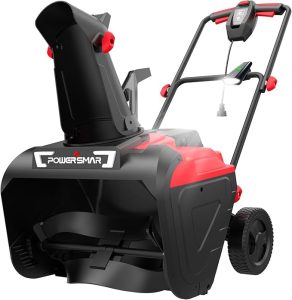
Proper snow blower storage is crucial for maintaining your equipment’s longevity and ensuring it’s ready for action when winter returns. Follow these essential steps to store your snow blower correctly during the off-season.
Clean Your Snow Blower Before Storage
Before storing your snow blower, give it a thorough cleaning. Remove any snow, ice, or debris from the auger, chute, and other components. This prevents rust and corrosion, which can damage your machine over time. Use a brush or cloth to wipe down the exterior, paying special attention to hard-to-reach areas.
Drain the Fuel for Optimal Snow Blower Storage
One of the most critical steps in snow blower storage is handling the fuel properly. Leaving old fuel in the tank can lead to carburetor clogs and engine problems. Either run the engine until it’s out of fuel or use a siphon to remove the remaining gas. For added protection, consider adding a fuel stabilizer to prevent fuel degradation during storage.
Lubricate Moving Parts
Proper lubrication is key to snow blower storage success. Apply a light coating of oil to all moving parts, including the auger, chute, and control cables. This prevents rust and ensures smooth operation when you bring the machine out of storage.
Check and Replace Worn Parts
Off-season storage is the perfect time to inspect your snow blower for worn or damaged parts. Replace any broken components, such as shear pins or belts, to ensure your machine is ready for the next winter season.
Choose the Right Snow Blower Storage Location
Selecting an appropriate storage spot is crucial for protecting your snow blower. Choose a dry, covered area like a garage or shed to shield it from the elements. If outdoor storage is your only option, invest in a weather-resistant cover designed for snow blowers.
Prepare the Battery for Storage
If your snow blower has an electric start, remove the battery and store it separately in a cool, dry place. Periodically charge the battery during the off-season to maintain its longevity.
Protect Against Pests
Rodents and insects can cause significant damage to stored equipment. Place mothballs or a natural repellent around your snow blower to deter pests during storage.
Proper Snow Blower Storage Position
Store your snow blower in an upright position to prevent oil leaks and carburetor issues. If space is limited, consult your owner’s manual for alternative storage positions that won’t harm the engine.
By following these snow blower storage tips, you’ll ensure your machine remains in top condition during the off-season. Proper storage not only extends the life of your snow blower but also guarantees it’s ready to tackle the first snowfall when winter returns. Remember, a well-maintained snow blower is key to efficient snow removal and safer winter conditions around your property.








